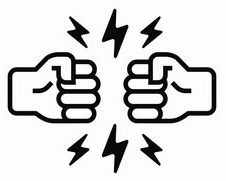How do you convert analog signal to digital signal?
How do you convert analog signal to digital signal?
ADCs follow a sequence when converting analog signals to digital. They first sample the signal, then quantify it to determine the resolution of the signal, and finally set binary values and send it to the system to read the digital signal. Two important aspects of the ADC are its sampling rate and resolution.
Why do we convert analog signals to digital?
An analog to digital converter (ADC), converts any analog signal into quantifiable data, which makes it easier to process and store, as well as more accurate and reliable by minimizing errors.
Which device converted analog signal to digital signal?
ADC
An analog-to-digital converter (ADC) performs the reverse function.
How does ADC and DAC work?
ADC and DAC Tutorial While a DAC converts a digital binary signal to an analog one such as voltage, an ADC does the reverse. It takes an analog source and converts it to a digital one. Then, an ADC converts the analog signal into a digital one.
Why is digital communication better than analog?
Advantages of Digital Communication Digital circuits are more reliable. Digital circuits are easy to design and cheaper than analog circuits. The hardware implementation in digital circuits, is more flexible than analog. The configuring process of digital signals is easier than analog signals.
What are the two main steps for analog-to-digital conversion?
The first step is to take a look at the two fundamental processes involved during the analog-to-digital conversion: sampling and quantization.
- Sampling and Quantization.
- Sampling.
- Quantization.
- Advantages of Analog-to-Digital Conversion.
- Conclusion.
Do we need analog-to-digital conversion?
An analog signal is continuous in time and it is necessary to convert this to a flow of digital values. It is therefore required to define the rate at which new digital values are sampled from the analog signal.
What is difference between analog and digital signals?
Analog and digital signals are the types of signals carrying information. The major difference between both signals is that the analog signals have continuous electrical signals, while digital signals have non-continuous electrical signals.
What is an example of digital signal?
Examples of digital signals are Computers, Digital Phones, Digital pens, etc.
What devices use digital signals?
Digital signals are discrete time signals generated by digital modulation. Example Human voice in air, analog electronic devices. Computers, CDs, DVDs, and other digital electronic devices.
What is difference between ADC and DAC?
ADCs sample continuous analog signals over an input voltage range and convert them into digital representations (words) with resolution equal to the ADC’s number of bits. DACs convert digital input code into analog output signals, essentially providing the opposite function of an ADC.
What are some examples of analog and digital signals?
Temperature sensors, FM radio signals, Photocells, Light sensor, Resistive touch screen are examples of Analog signals. Computers, CDs, DVDs are some examples of Digital signal. The digital signal bandwidth is high. Analog signals are deteriorated by noise throughout transmission as well as write/read cycle.
How can I convert analog to digital?
Steps to Convert Analog Videos to Digital Videos with Wondershare Analog Video Converter: Connect VHS Player to PC. Connect your VHS player to your personal computer with the use of a SCART conversion cable. Add Analog Videos to Wondershare Analog Video Converter. After connecting your analog player with your computer, you can find a removable disk where store your analog videos. Select Digital Video Output Format.
What is the difference between analog and digital data?
The key difference between analog and digital technologies is that the first records waveforms as they are, while the second converts analog waveforms into sets of numbers, recording the numbers instead. When played back, the numbers are converted into a voltage stream that approximates the original wave.
Why convert digital to analog?
A Digital to Analog Converter, or DAC, takes your digital content and transforms it into analog so that your system can amplify it and play it through your speakers. If you think you already have DACs in your system, you would be correct.
